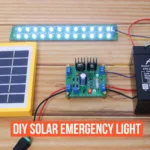India is rapidly moving towards clean energy. One important system helping this shift is net metering. It allows users to send extra solar electricity back to the power grid and receive bill credits. If you are planning to install rooftop solar panels in India, it is important to understand net metering policies in different Indian states.
This blog explains net metering in simple words, provides a state-wise breakdown, and answers common questions. It is written for homeowners, solar enthusiasts, and anyone interested in solar energy adoption in India.
What Is Net Metering?

Net metering is a billing method for rooftop solar systems. It records how much electricity your solar panels send to the grid and how much you consume from it.
When your solar panel system produces more power than your home needs, the excess is sent to the local grid. You receive credits for this power. When your system doesn’t produce enough, you use electricity from the grid. Your bill reflects the net usage, hence the name “net metering.”
Benefits of Net Metering in India:
- Reduces monthly electricity bills
- No need for expensive solar batteries
- Helps promote clean energy
- Best suited for homes with 1 kW to 10 kW solar capacity
Also Read Understanding Net Metering Policies in India (2025)
State-Wise Net Metering Policies in India (2025)
Different Indian states follow their own net metering rules. The rules vary based on system size, credit settlement, and tariff rates. Here’s a list of top states and their current solar net metering policies:
1. Delhi
- System size: Up to 1 MW
- Who can apply: Residential, commercial, industrial
- Settlement: Annual carryover of unused credits
- Note: One of the most solar-friendly states
2. Maharashtra
- System size: 1 kW to 1 MW
- Credit: One-to-one billing for exported power
- Conditions: Transformer capacity limit of 40%
- Notes: Net metering available but future policy changes expected
3. Uttar Pradesh (UP)
- System size: Up to 2 MW
- Credit settlement: Monthly and yearly options
- Subsidy eligibility: Available under PM Surya Ghar scheme
- Tip: Apply early as net metering approval may take time
4. Tamil Nadu
- Residential limit: Up to 10 kW for net metering
- Commercial: Shifted to gross metering model
- Notes: Residential users benefit the most
5. Gujarat
- System size: Up to 1 MW
- Tariff: ₹2.25/unit for 5 years, then 75% of market rate
- Best for: Homeowners with high rooftop area
6. Karnataka
- System size: Up to 1 MW
- Residential tariff: ₹3.82/unit (for up to 10 kW systems)
- Credits: Yearly settlement
- Status: Very solar-friendly state
7. Punjab
- System size: 1 kW to 1 MW
- Carryover: Up to 90% annual credit allowed
- Reliability: Strong policy and support
8. Haryana
- System size: Up to 2 MW
- Consumer categories: Domestic, industrial, institutional
- Notes: Good support for larger systems
9. Rajasthan
- System size: Up to 1 MW
- Policy type: Net billing with caps
- Tariff: ₹2.87 to ₹3.00/unit
- Important: Keep track of policy changes
10. West Bengal
- System size: Up to 2 MW
- Tariff: ₹2.09/unit
- Note: Policy available on paper, but implementation is limited
Key Net Metering Terms to Know
- Rooftop solar system: Solar panels installed on your home or business roof.
- Gross metering: All solar electricity is sold to the grid, and all consumption is bought from the grid.
- Feed-in tariff: Rate at which solar energy sent to the grid is paid.
- Bi-directional meter: Tracks both incoming and outgoing electricity.
Challenges with Net Metering in India
While net metering is a great incentive, there are some ongoing challenges:
- Delayed approvals by DISCOMs in some states
- Changing policies—some states want to shift to gross metering
- Low tariff for exported power in certain states
- Lack of awareness among residential consumers
Still, many states are streamlining the process with online applications and fixed timelines.
Average Tariff Rates for Exported Solar Energy (2025)
| State | Export Tariff (₹/unit) |
|---|---|
| Karnataka | ₹3.82 |
| Gujarat | ₹2.25 (first 5 yrs) |
| UP | ₹2.98 + 25% bonus |
| Rajasthan | ₹2.87 – ₹3.00 |
| Punjab | Varies, usually ₹3.50+ |
| West Bengal | ₹2.09 |
| Assam | ₹5.33 (FY 2024-25) |
Tips Before Applying for Net Metering in India
- Check your DISCOM’s latest solar rooftop guidelines
- Choose a reliable solar installer with net metering experience
- Apply for both solar subsidy and net metering early
- Make sure your roof gets enough sunlight
- Use MNRE-approved solar panels and inverters
- Keep an eye on policy updates in your state
FAQs: Net Metering in India (2025)
Q1. Is net metering available in all Indian states?
Yes, most Indian states have net metering policies. But implementation and approval timelines vary.
Q2. How does net metering reduce my electricity bill?
You earn credits for extra solar power sent to the grid. These credits reduce your bill amount.
Q3. What is the limit for rooftop solar under net metering?
System size usually ranges from 1 kW to 2 MW depending on the state and electricity board.
Q4. Can I use net metering with solar subsidy?
Yes. Most rooftop solar subsidy schemes in India also support net metering.
Q5. What happens if I export more electricity than I consume?
Extra units are credited to your account and carried forward (monthly or annually). Some states allow cash settlement after 1 year.
Q6. How do I apply for net metering in India?
Contact your local electricity DISCOM or use their official portal. Most states require forms, inspection, and a bi-directional meter installation.
Final Thoughts
Net metering in India is helping thousands of families reduce electricity bills and support green energy. Though some states are changing rules, many are still offering strong net metering support for rooftop solar users.
Always check your state’s net metering policy before installation. With the right setup, you can enjoy free power for decades and reduce your carbon footprint. As India aims for 500 GW of non-fossil energy by 2030, your solar investment will play an important role in a sustainable future.
Author- Ayush










